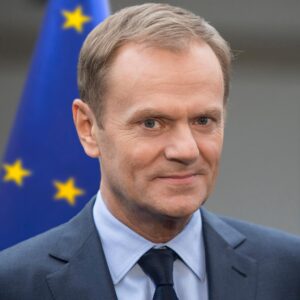Poland’s Bold Defense Strategy: Preparing for Uncertainty

As geopolitical tensions rise, Poland is making significant strides in fortifying its military. Prime Minister Donald Tusk recently disclosed plans to bolster the country’s armed forces to an impressive 500,000 troops, a move designed to defend against the looming threat of Russian aggression. Tusk stated, “We will try to have a model ready by the end of the year so that every adult male in Poland is trained for war.” This ambitious initiative is poised to reshape Poland’s military landscape, more than doubling the existing force of approximately 200,000 soldiers.
A Response to Evolving Threats
The current military strategy reflects an urgent response to evolving dynamics in Eastern Europe. Tusk emphasized the shifting situation between Poland and Ukraine, saying, “Today, the situation of Poland, objectively and the situation of Ukraine above all, is more difficult than it was a few months ago.” This increased urgency comes as Poland finds itself in a strained political climate, exacerbated by conflicts that have impacted the region significantly.
With this escalated recruitment plan, Poland is set to match the military capabilities of other NATO members. As of now, it boasts the second-largest army in NATO, following the United States and Turkey. With Turkey’s military at approximately 512,000 troops, Poland’s push for expansion is not just about numbers but also about strategic positioning within the NATO framework.
Training Every Adult Male
A striking aspect of Tusk’s defense strategy is the mandate for military training for “every adult male” in Poland. Women currently have the option to join voluntarily, but many EU nations are increasingly considering or implementing compulsory training for women as well. Poland is among the 11 EU countries prepared to involve women in frontline combat roles, marking a significant transformation in military dynamics and gender roles within the armed forces.
Rising Defense Budgets Amidst Economic Strain
Poland has committed to increasing its NATO defense spending to 4.2% of GDP in 2024, with plans to further escalate to 4.7% ($48 billion) by 2025. This move comes even as the European Union has initiated proceedings against Poland for its growing budget deficit. While Poland has historically been the largest recipient of EU funds, there are mounting political conditions tied to these funds, including demands for reforms in areas such as judicial independence and climate policies.
Amidst such economic pressures, the other NATO and EU members appear hesitant to increase their own defense budgets, often pushing Poland to spend more due to their proximity to potential threats. This creates a complex situation where Poland is caught between its commitment to NATO and the realities of its economic standing.
Public Sentiment: A Divided Nation
The Polish populace is sharply divided on these matters. A recent survey conducted by Ukrainska Pravda noted that a significant portion of the population, about half, believes Poland should not be embroiled in the ongoing conflict in Ukraine. In fact, the same survey revealed that negative sentiments towards Ukrainians have risen, with only 16% of younger Poles expressing favorable views.
As public opinion increasingly leans towards a desire for peace, a November 2024 survey recorded that 55% of Poles supported the cessation of the war, even if it meant compromising the territorial integrity of Ukraine. This is a substantial increase from the 24% of respondents who favored such measures in late 2022, indicating a deepening war fatigue among the Polish electorate.
Moreover, while 53% of Poles support accepting Ukrainian refugees, a striking 67% believe that Tusk should send back all military-aged men. This public sentiment showcases a complex relationship with both the war and refugees and highlights the growing concerns about national security.
The Future of Polish Defense
As Poland prepares for an uncertain future, leaders are invoking the rhetoric of historical invasions to justify military expansions. Yet, many in Poland’s younger generations express a reluctance to become involved in what they perceive as foreign conflicts, especially those framed by Western interests.
At Extreme Investor Network, we believe it is crucial for investors and observers to understand how these military developments can influence economic conditions and investment trends in the region. As nations adjust their defense postures and public sentiment shifts, opportunities and risks will emerge on multiple fronts. Monitoring these changes will be key for smart investment decisions in the ever-evolving global landscape.
In summary, as Poland gears up for a potential conflict, the implications stretch far beyond military discussions and touch on economic, social, and geopolitical currents. Understanding these dynamics will be vital as we navigate through this unpredictable era. Stay tuned to Extreme Investor Network for deeper insights and analyses.

